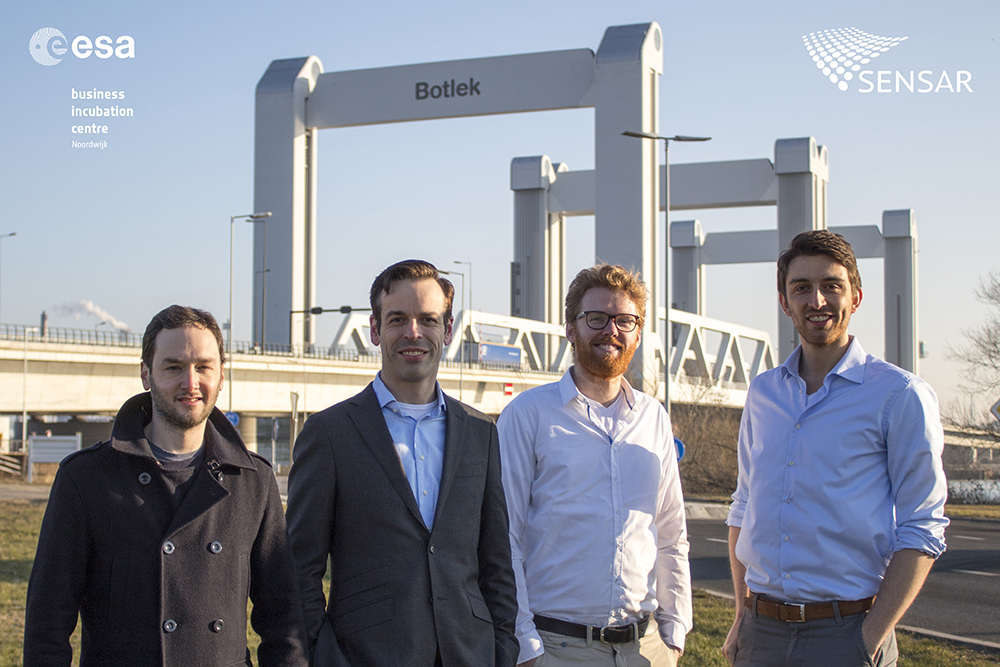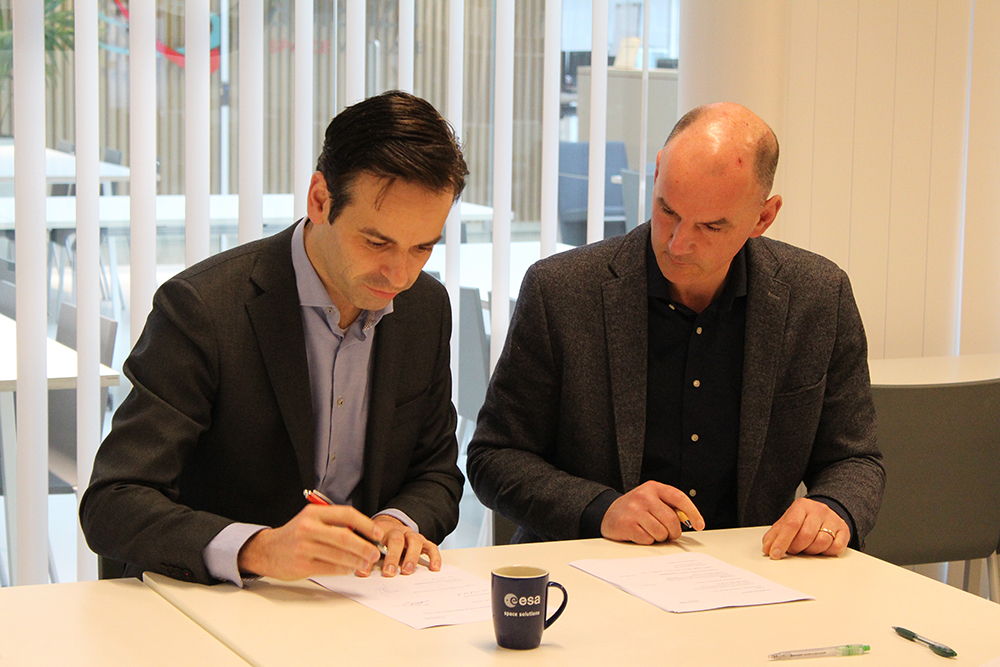If you have ever seen a land surveyor at work, you can imagine that accurately measuring or inspecting a large piece of urban area can be quite a time-consuming task. Not to mention the costs involved when traffic has to be shut down in order to inspect a highway or a bridge. Wouldn’t it be marvellous if land surveying could be done from a distance – perhaps even from space?
Our latest incubatee,
Sensar, proposes exactly this. Using Interferometric Synthetic Aperture Radar – or
InSAR – the tiniest variations in the earth’s surface can be measured by satellites. The technique uses the slight differences in the phase of the radar waves returning to the satellite in order to pick up millimetre-scale changes to the earth surface over time.
Sensar will make InSAR data available to civil engineers at construction companies, engineering firms and infrastructure managers. Because InSAR is based on radar, it works just as well at night and on cloudy days. And because measurements are made from space, no road blocks are necessary.

The Sensar team in front of the Botlek Bridge, the perfect study object for their application.
“I personally see many possible applications for InSAR in civil engineering,” says Jos Maccabiani, one of Sensar’s five co-founders and a geotechnical engineer himself. “But the technology is still quite unknown and too difficult to work with. And in general, the space industry is not very good at connecting with the non-space sector; at understanding their problems and connecting with customers.”
Sensar hopes to bridge this gap by providing civil engineers with InSAR data in a format that fits their specific needs. Engineers should for instance be able to use the data in their own software environment, even combining the InSAR data with computer models or traditional measurements. “We do not want to take the place of the engineer. We just want to give them access to a powerful data set to combine with all their other tools to best serve their customer,” adds Maccabiani. “We want to democratize InSAR.”
Competition and customers
There are a few similar projects out there, but according to Maccabiani, Sensar’s approach is unique: “Most competitors are university spin-offs and tend to focus on customized, individual work for each new project. We want to turn this around: learn from each project what we should change to our InSAR Platform so that we can do less custom work and focus on efficiency and quality control. This makes our solution more scalable and thus more affordable.”
As such, Sensar is looking for long-term partnerships with their customers. The launching customer, Strukton Civiel, a large Dutch construction firm, already recognized the value in Sensar’s ambition and the two companies have entered into a productive collaboration to further the uptake of InSAR in civil engineering practice.

Jos Maccabiani signing the incubation contract on behalf of Sensar.
The Sensar team applied for incubation in ESA BIC Noordwijk even before they officially founded the company. “We have never started a company before, so we really hope to learn a lot from the other entrepreneurs in the network.”



